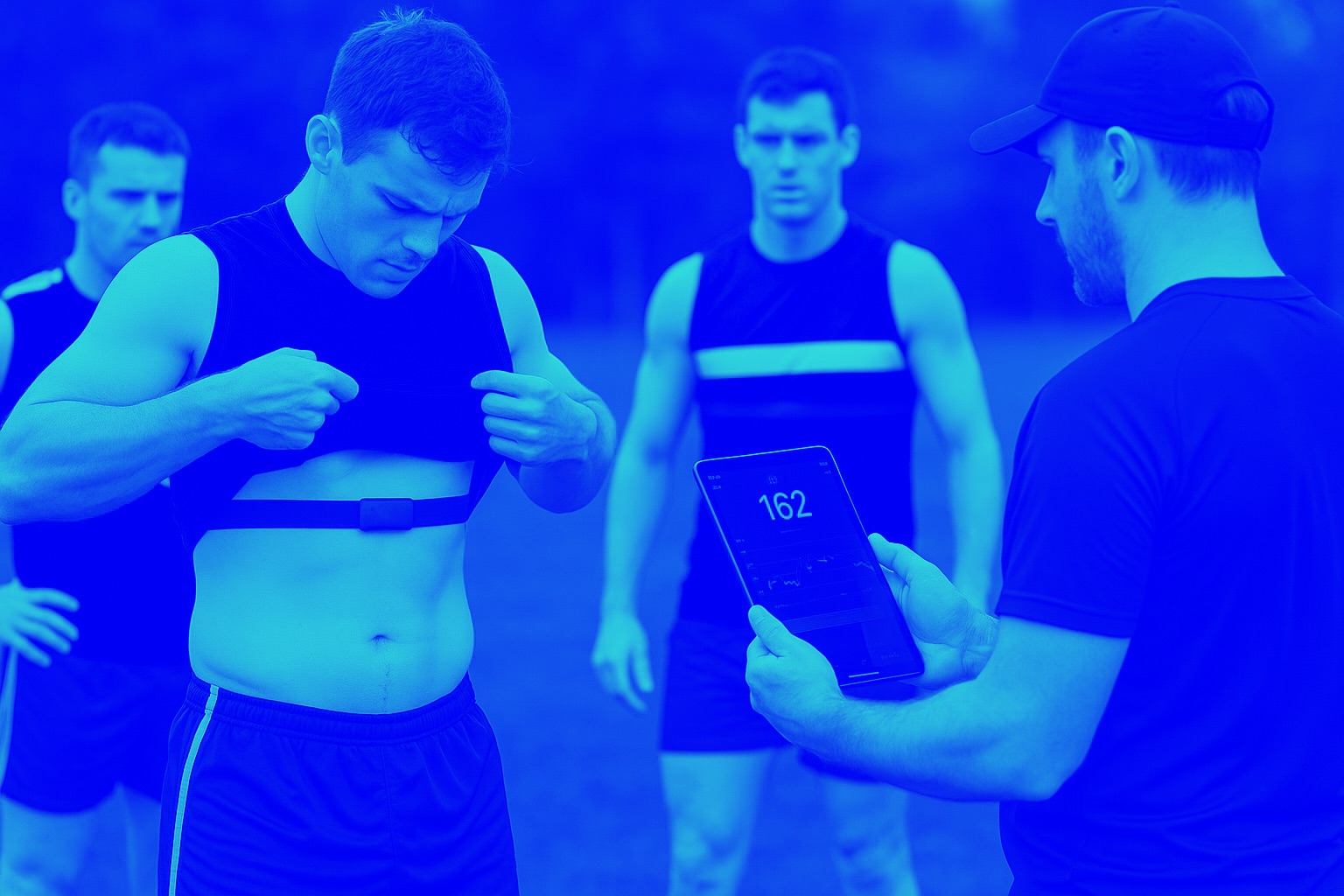Monitoring player fitness, fatigue status and running performance during an in-season training camp in elite Gaelic football
Malone S., B. Hughes, M. Roe, K. Collins, M. Buchheit. Monitoring player fitness, fatigue status and running performance during an in-season training camp in elite Gaelic football. Science and Medicine in Football, In press, 2017.
Full paper here
ABSTRACT
We examined selected perceptual and physiological measures to monitor fitness, fatigue and running performance during a one week in-season training camp in elite Gaelic football. Twenty-two elite Gaelic football players were monitored for training load (session RPE x duration), perceived ratings of wellness (fatigue, sleep quality, soreness); heart rate variability (HRV;LnSD1), heart rate recovery (HRR), exercise heart rate (HRex), lower limb muscular power (CMJ) and global positioning system (GPS) variables. The Yo-Yo intermittent recovery test level 1 (Yo-YoIR1) was assessed pre-and post the training camp. GPS units were used to monitor players throughout the camp period, with specific small sided games (SSG) used as a measure of running performance. There were significant day-to-day variations in training load measures (Coefficent of variation, CV: 51%; p ≤ 0.001), HRex decreased (-12.2%), HRR increased (+3.3%) CMJ decreased (-8.1%) and pre-training LnSD1 (+14.1%) increased during the camp period. Yo-YoIR1 performance (+19.7%), total distance (TD) (+9.4%), high speed distance (HSD) (+12.1%) and sprint distance (SPD) (+5.8%) within SSG improved as the camp progressed. ∆ HRex and ∆ HRR were correlated with ∆ Yo-YoIR1 (r = 0.64; – 0.55), ∆HSD (r = 0.44; −0.58), ∆ SPD (r = 0.58; −0.52). ∆ LnSD1 was correlated with ∆Yo-YoIR1(r = 0.48; 90%CI: 0.33 to 0.59) and ∆ TD (r = 0.71) There were large correlations between ∆ wellness and ∆ Yo-YoIR1 (r = 0.71), ∆ TD (r = 0.68) and ∆ SPD (r = 0.68). Increases in training load were observed during the training camp. Daily variations in training load measures across the camp period were shown to systematically impact player’s physiological, performance and wellness measures.
Keywords: GPS, HR, Team-sports, Monitoring, Training Load

Figure 1 – Daily changes in (A) total distance (m) – double bars indicate completion of two sessions on the given day, (B) training load (sRPE; AU) – double bars indicate completion of two sessions on the given day, (C) sub-maximal exercise heart rate (HRex) and Heart rate recovery (HRR), (D) natural logarithm of standard deviation of instantaneous beat-to-beat R–R interval variability, measured from Poincaré plots prior to the completion of training (LnSD1). All data presented as mean ± SD.



